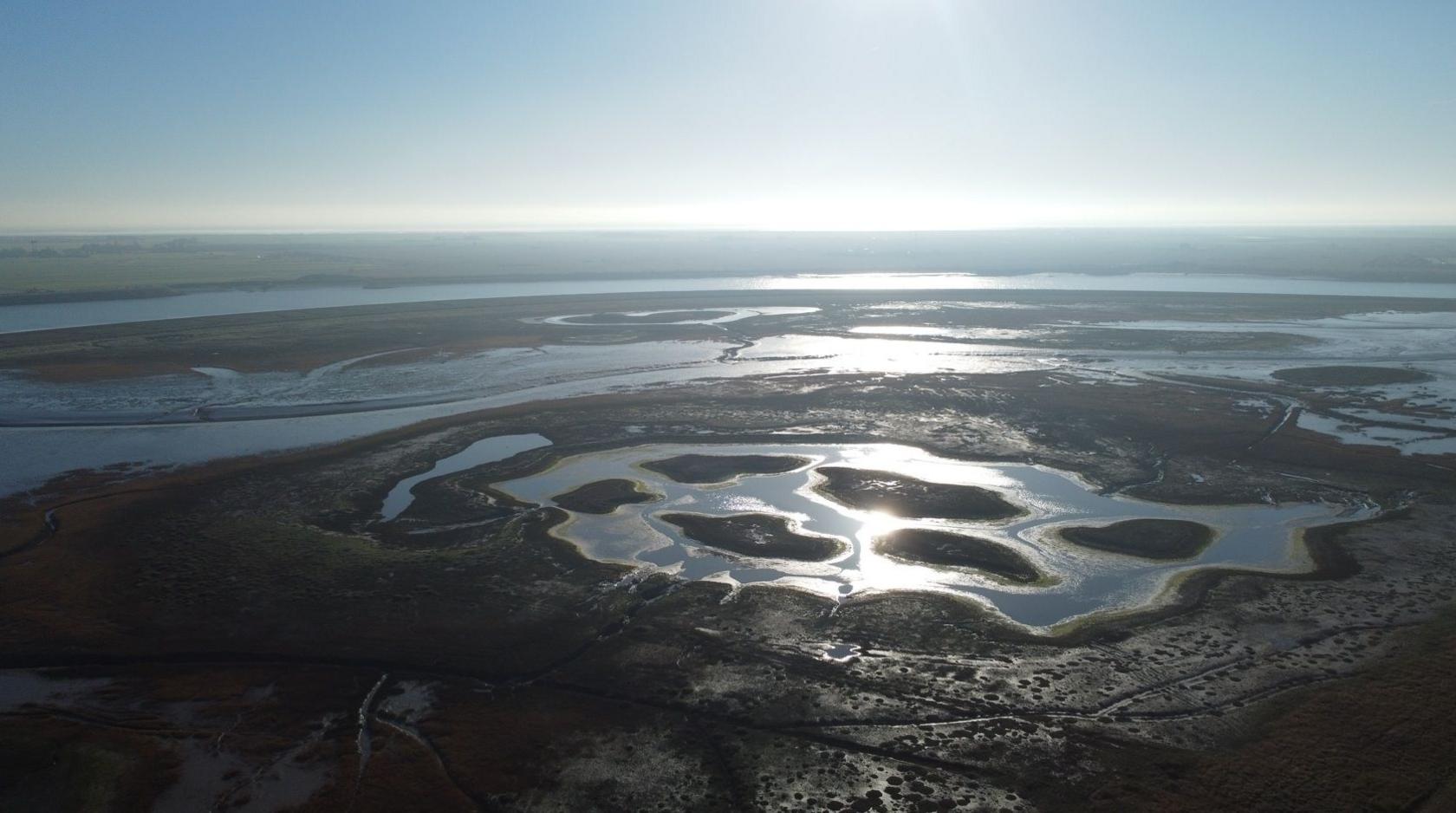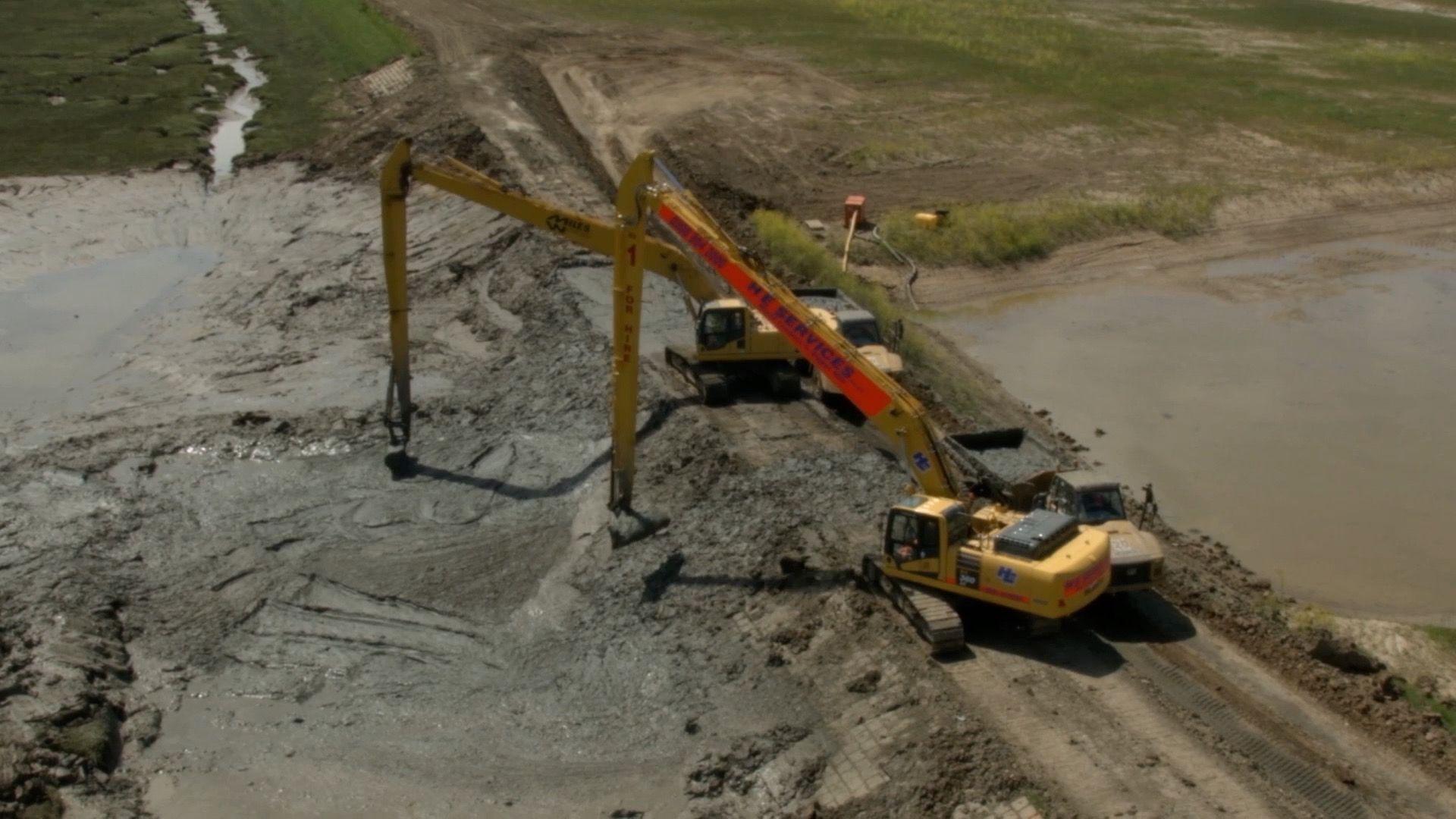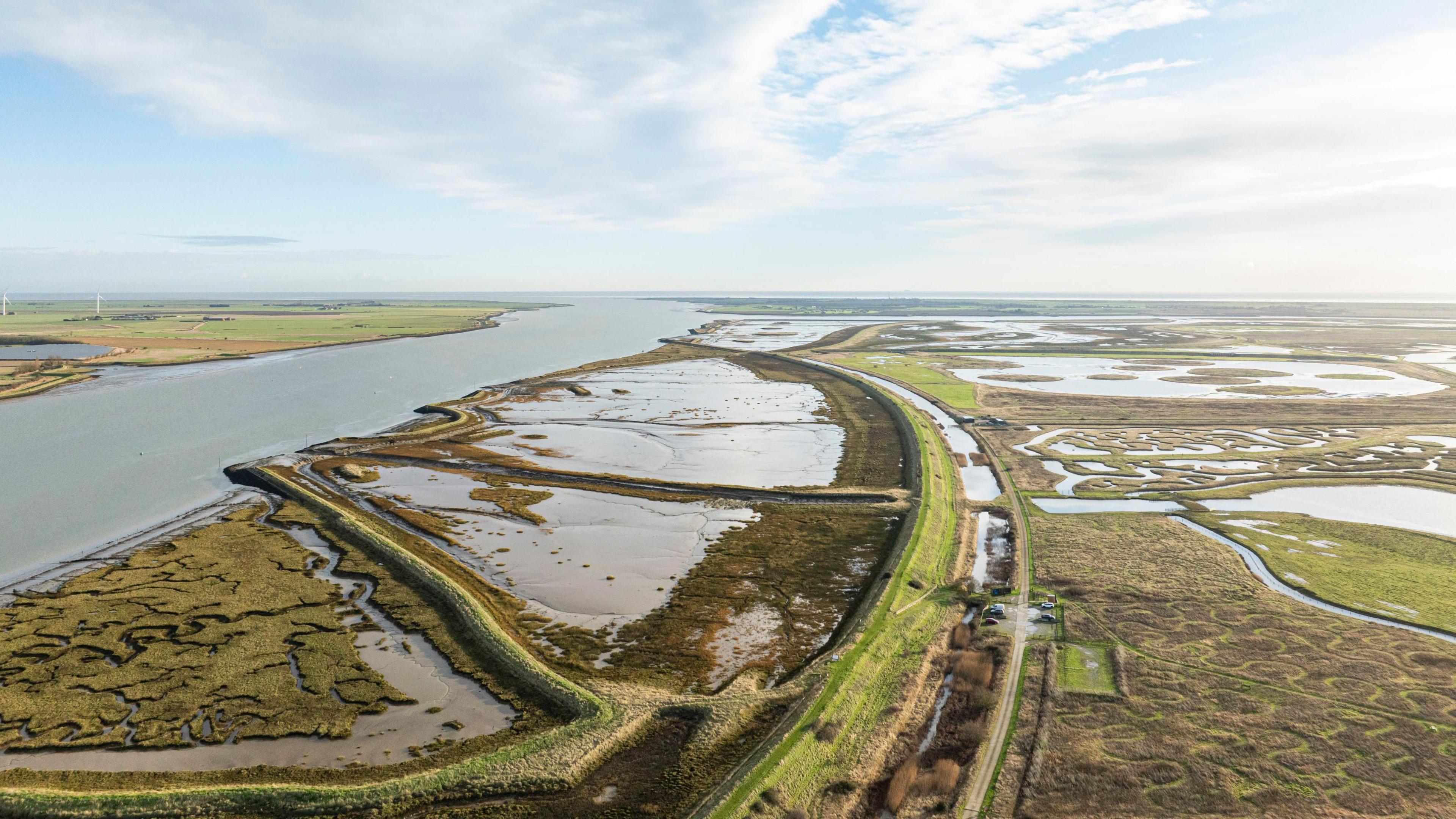Island's birds thriving decade after railway project

The Jubilee Marsh area of Wallasea Island saw a record 39,000 birds last winter
- Published
An island transformed into a nature haven thanks to excavations from a major engineering project is thriving with record numbers of birds.
RSPB Wallasea Island, a 740-hectare reserve at Rochford in Essex, was created using more than three million tonnes of earth, brought by boat from the tunnels and shafts created by the Crossrail scheme.
Before work began more than a decade ago there were just a small number of birds present - but almost 40,000 arrived last winter.
Rachel Fancy, Wallasea Island site manager, said: "It's been really good and an amazing project to be a part of."

There are more than 10,000 Knot birds on Wallasea Island
Now, the haven on the island, Jubilee Marsh, has nearly 800 Avocets, over 10,000 Knot, and nearly 3,000 Grey Plover and Bar-tailed Godwits, with a new record of 39,000 birds over-wintering on the site.
The site was walled off from the sea hundreds of years ago but when it was taken over by the RSPB, it wanted to transform the island back into a haven for birds.
It used the earth from the Elizabeth line excavations to bring part of the island to a metre-and-a-half above sea level and then moulded it to create a new shape to the island, with new sea walls and a mosaic of mudflats and lagoons.
In July 2015, parts of the seawall were removed, with the sea flowing back into Wallasea Island for the first time in 400 years, with the newly created wetlands perfect to allow the birds to feed, nest and refuel.
The "re-wetting" of the site created lagoons, salt marshes and entire new islands, with the RSPB saying it also created natural flood defences to absorb storm surges and rising water levels.
'Amazing'

Wallasea Island site manager Rachel Fancy
Ms Fancy said: "The mud flats and salt marshes along the east coast are all part of a massive flyway - the east Atlantic flyway - which birds will use to migrate through to the winter.
"They stay here through the winter when it's warmer than the north and they move up through the coast in the summer," she said.
"Birds will come in their thousands to feed and breed during the summer."

Work to move three million tonnes of soil from the Crossrail project took place between 2011 and 2015
While Wallasea Island may now be a tranquil environment where birds are thriving, for four years it was a full-blown construction site.
The soil from Crossrail was shipped between 2011 and 2015 from London, with work around the clock on boats and the island itself.
Ms Fancy added: "It was totally different to what it is now; high vis vests, safety helmets, at least 20 dumper trucks plus all the other machinery moving material around to where it needed to be.
"People working on boats 24 hours a day, and then a lunar-scape where you saw bare soil mud being moved, with no vegetation and hardly any wildlife either."
The winter of 2015, shortly after the seawall was breached, saw a very bare landscape with little amounts of seeds or invertebrates for birds to feed on.
But since then the island's habitat has improved every year with the peak of 39,000 birds arriving last winter.
"It's been a really good and an amazing project to be a part of, and really nice to see that development afterwards," Ms Fancy added.
"From building site all the way through to a peaceful landscape where you can go on a walk and enjoy the wildlife."
Related topics
- Published15 January

- Published7 March 2016
- Published17 September 2012